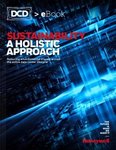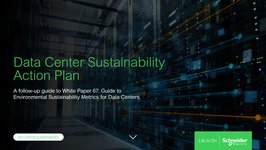The raging debate over the ESG paradigm ignores the most compelling issue: there are huge profits to be made in sustainable investments.
Having recently exited a 20-year venture in hydroelectric-powered data centers in the Nordic countries, I can vouch for the value of a cost-saving and sustainable solution for a capital-intensive industry. Particularly when it harnesses the power of a highly engaged next-gen workforce.
Critics of ESG contend that politicians, activists, and giant asset managers substitute ideology for market forces.
The belief is that those players are coercing companies to adopt practices that waste resources, provide little benefit, and distract management.
There once was a time when “going green” per se may have hurt earnings, but sentiment and markets have changed.
Harnessed correctly and marketed wisely, sustainable solutions addressing real market needs can create highly profitable business models. The C-Suite should not permit the relative novelty of ESG metrics to obscure business opportunities.
DigiPlex (recently sold & rebranded as STACK Infrastructure) is a data center operator across Scandinavia. It provides customers, including Silicon Valley’s Big Tech companies, with data center solutions that use less expensive, renewable hydroelectric power versus the fossil fuel power widely used elsewhere. When the cost of power comprises 50-60 percent of the typical data center’s operating costs, paying 1/5 the cost for power greatly enhances earnings.
Hydro saves carbon
By utilizing hydroelectric power instead of fossil fuel over the last decade, DigiPlex avoided more than 339,000 tons of carbon emissions. That’s equal to what a gas-fueled car would emit driving 1,948 trips to the moon and back.
Why are data centers so important in this debate over going green? Simply put, they account for nearly one percent of the world’s annual power consumption, which approximates that of the global airline industry. These large, non-descript buildings house “the cloud.” All the bits and bytes that underpin innovations in autonomous driving, Artificial Intelligence, robotics, 5G, and the Internet of Things reside and are analyzed in thousands of data centers around the globe.
And as the number of data centers grows, so too does their power consumption. But that usage need not lead to run-away carbon emissions.
While fitting comfortably in the ESG-compatible bucket, sustainable data centers first fall in the smart investment bucket. But sustainable data centers are not the only asset class that fits in that bucket. A number of emerging sectors offer similar attractiveness, including other infrastructure components of the Internet, infrastructure for the electric vehicle industry, and sectors involved in energy transition.
Wise leaders are also keenly aware of the human component of this debate. According to UN population data, by 2025 Millennials & Gen Z will comprise 64 percent of the working population in the US. By 2030 their presence rises to 74 percent.
Paying attention to the values and beliefs of the vast majority of the workforce – soon to be majority of management ranks – can reap significant dividends.
These younger generations are significantly more aware of environmental issues facing the world today. They demand action from their employers and vote with their wallets.
More and more products and services are being marketed according to their green credentials. This dynamic puts those younger consumers and workers in the driver’s seat, especially in a post-Covid world of job mobility and tight labor markets.
Further, and perhaps a more important cautionary note, entrepreneurialism is rampant among Millennials and Gen Z. They take risks in greater numbers and with less fear than the Boomer generation. Combine these characteristics and you have a wave of disrupters coming. Ignore them – and their laser focus on finding solutions to today’s environmental challenges – at your peril.
Establishing the right sustainability mindset launches a virtuous circle: making sustainability a priority attracts a smarter, more dedicated team; that team works harder at creating a more profitable, sustainable business model; those solutions can generate higher returns.
This virtuous circle in turn creates a powerful force within the workplace: a heightened sense of purpose. Harness that purpose and the new market forces underlying it and suddenly sustainable solutions can be vastly more profitable than the status quo.





